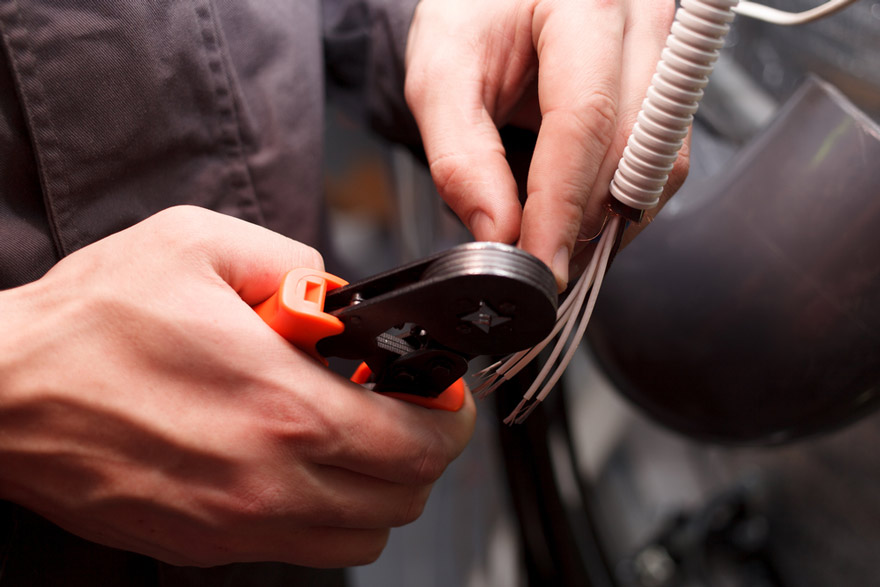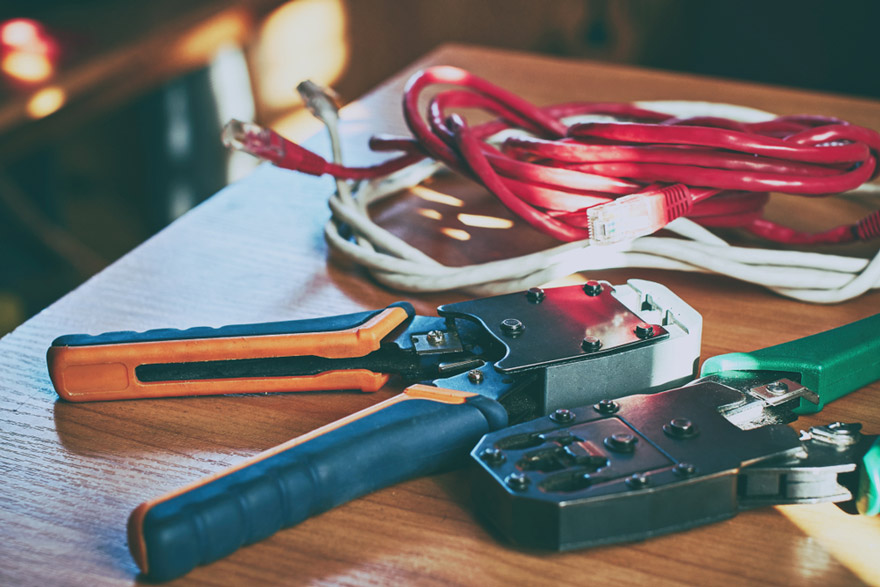This website uses cookies so that we can provide you with the best user experience possible. Cookie information is stored in your browser and performs functions such as recognising you when you return to our website and helping our team to understand which sections of the website you find most interesting and useful.
Electrified commercial specialist vehicles are almost certainly going to exceed much higher voltages than their passenger-carrying counterparts. In some cases, these vehicles may be operating on voltages of 1000V. Employing high voltage circuits in a vehicle makes one thing crystal clear: safety and quality are not only desirable but absolutely imperative.
The repercussions of a bad crimp can be crippling. To safeguard drivers, passengers, and even fellow engineers, high calibre, quality wiring and manufacturer-approved tools are vital for establishing a good quality crimp. Quality crimps protect wires from the elements, corrosion and they allow fellow engineers to safely work on these vehicles. But how can you ensure crimp quality throughout every single connection, especially in vastly complex designs with hundreds of connected wires?
What is crimping and why is it so important in specialist EVs?
An electrical crimp is a solderless joint that presses together multiple wires by deforming them into one another. An expert quality crimp is gas-tight, to keep oxygen and moisture from corroding the metals, and strong due to it being a single, moulded material with no breaks or joints.

Mastering the basics of crimping is crucial in the world of specialist electric vehicles. Specialist EVs often have to work in tough, unpredictable and volatile environments, putting components through their paces. Take a hybrid haulage truck, for example. Plug-in hybrid trucks may be driven across bumpy mountain roads, ice-slicked Northern states or even through climates of high-humidity. Quality crimps ensure terminals can withstand these tough conditions.
Now, take into consideration the intense vibrations, potentially longer periods between service intervals and the rugged life of a specialist vehicle, and it becomes increasingly clear why high-quality crimps are vital.
The right connection
Crimping is not only a matter of quality and neatness. It’s a common misconception that any tool can be used to crimp a terminal. If the crimp passes a brief visual inspection, some might (with some justification) believe the connection is secured. But looks can be deceiving and crimping a solderless terminal requires a carefully engineered and precision solution.
In order to prevent the risks caused by poorly crimped terminals, engineers must take the time to familiarise themselves the particular components specification surrounding crimping.
When stripping back the insulation the cost of poor crimp quality can be expensive, therefore ensure there are no broken strands left making unintended connections. Finally, when it comes to crimping the terminal there must be mechanical support around the wire but also space for stress relief either side of it. As mentioned, some movement has to be accounted for in EVs.

Inspecting your crimp
Once a crimped terminal is in place, it could be a long time before it is properly inspected again. Unfortunately, many engineers within the industry overlook the basics and importance of a good crimp, resulting in the integrity of the products being put at risk.
If you are working alongside a large engineering team, ensure crimp quality checks take place systematically – so it’s a respected process or procedure. As specialist EVs typically have fewer moving parts, they have the potential to be easier to maintain and offer reduced running costs – so making sure crimps meet high expectations is crucial.
Best tools for the job
As with any emerging technology, the EV sector is continuously evolving, Dalroad supply the EV industry with specialist components, designed for EV on-board and infrastructure applications.
Hand tools are ideal for prototyping, and projects at their earliest stages. Suitable for crimping all pin and socket terminal sizes and replicating any crimps that have been applied by a harness manufacture. All hand tools Dalroad offer have a fully closing mechanism ensuring that a full crimping cycle is completed – meaning there’s far less chance of human error.
Automated tools, on the other hand, require a bench-top to work from and are designed for incredibly fast crimping when higher production volumes are called for. They use pneumatic power to crimp the terminals, many feature foot switches for control, and easy to change dies and locators for whatever size of cable you’re working with.
Of course, there’s also a whole array of specialist components, toolings and connectors, headers, terminals and relays for every aspect of working on specialist EVs. As the industry evolves, and emerging technologies begin to make headway in the industry, you can keep in the know right here, with the latest resources from Dalroad.

